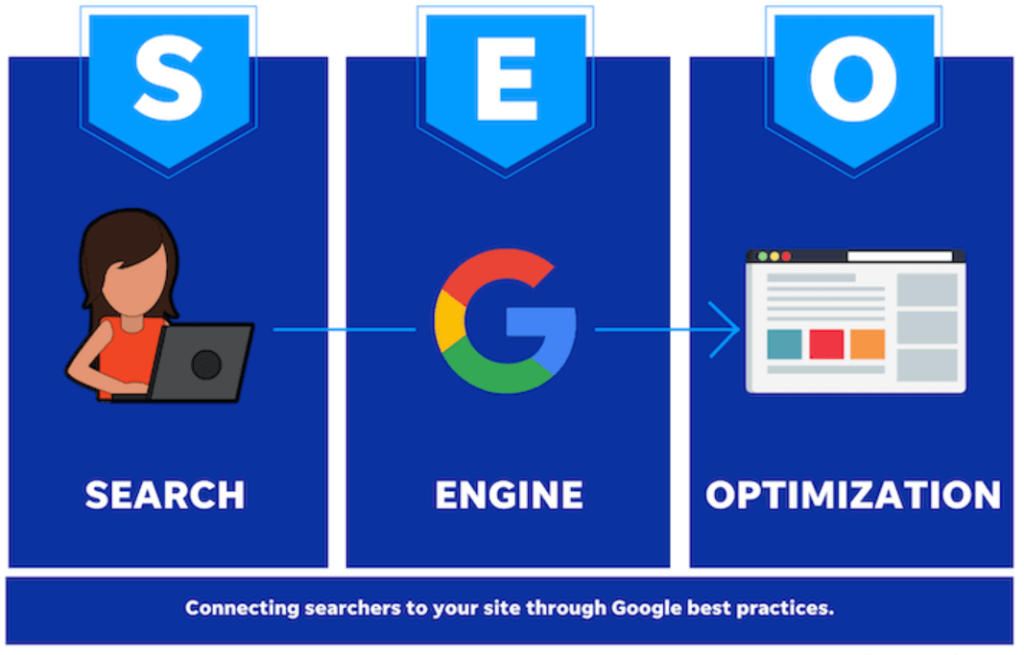In the ever-evolving landscape of higher education, marketing plays a crucial role in attracting students, promoting institutions, and staying ahead of the competition. As we enter 2023, higher education marketers must stay updated on the latest trends that can shape their strategies and drive success. This blog post will explore ten key higher education marketing trends in 2023, providing insights and actionable ideas to optimize your marketing efforts and reach your enrollment goals.
1. The Power of Authentic Branding

In an era where students have numerous educational choices, universities must establish an authentic brand identity that resonates with their target audience. Authentic branding goes beyond creating a logo and a tagline; it involves crafting a unique story that reflects the university’s values, mission, and culture. By developing a compelling brand narrative, universities can differentiate themselves and attract students who align with their vision.
Authentic university branding not only helps in attracting students but also in building long-term loyalty. When students feel strongly connected to a university’s brand, they are likelier to become passionate advocates and lifelong supporters. Stanford University’s “The Wind of Freedom Blows” is a prime example of an authentic brand message that inspires prospective students and fosters a sense of connection. By showcasing their commitment to academic excellence, innovation, and societal impact, Stanford has successfully positioned itself as a leading institution that resonates with students seeking a transformative education.
To establish an authentic brand, universities must conduct thorough research to understand their target audience. This involves analyzing demographic data, conducting surveys, and engaging in focus groups to gain insights into what motivates and influences students’ decisions. By aligning their brand messaging and visual identity with the aspirations and values of their target audience, universities can create a powerful brand that stands out in a crowded marketplace.
2. Engaging Through Short-Form Content

The rise of short-form content platforms, such as TikTok and Instagram Reels, presents a unique opportunity for universities to engage with prospective students. These platforms offer a visually appealing and interactive format that resonates with the younger generation. By creating captivating and shareable content, universities can showcase their campus life, academic programs, and student achievements in a concise and attention-grabbing manner.
Short-form content allows universities to connect with their audience on a personal level. Universities can provide glimpses of campus culture, faculty expertise, and student success stories through quick videos and snippets. These bite-sized content pieces are highly shareable, allowing prospective students to share them easily with their peers and social networks. This organic sharing creates a ripple effect, expanding the reach of the university’s message and attracting more interest from potential applicants.
To effectively leverage short-form content, universities should focus on creating content that is not only visually appealing but also informative and authentic. Highlighting student experiences, such as campus events, study abroad programs, and research opportunities, can provide valuable insights into the university’s unique offerings. By involving current students in the content creation process, universities can add an authentic and relatable touch that resonates with prospective students.
Additionally, universities should embrace the interactive nature of these platforms by encouraging user-generated content. This can involve launching challenges or contests where students can showcase their talents or share their stories. By actively involving prospective students in the content creation process, universities can foster a sense of community and engagement, ultimately leading to a stronger connection with their audience.
3. Personalization for Enhanced Student Experience

One-size-fits-all marketing approaches no longer suffice in higher education. Students expect personalized experiences tailored to their interests and needs. Universities can leverage data analytics and automation tools to segment their audience and deliver targeted messaging and experiences throughout the student journey.
To implement personalized marketing strategies, universities must invest in robust customer relationship management (CRM) systems that collect and analyze student data. Universities can create customized communication and outreach strategies by gathering information on students’ preferences, academic interests, and engagement patterns.
Segmentation is a key aspect of personalization. By dividing their target audience into distinct groups based on demographics, academic interests, or geographic location, universities can tailor their messaging and content to resonate with each segment. For example, a university may send tailored emails to prospective engineering students highlighting specific programs and research opportunities while sending a different set of emails to prospective business students emphasizing internships and networking events.
Automation tools play a crucial role in personalization by enabling universities to deliver timely and relevant content to students. Automated email campaigns, for instance, can be set up to send personalized messages triggered by specific student actions or milestones, such as application submission or acceptance. This not only streamlines the communication process but also ensures that students receive information that is most relevant to their stage in the enrollment journey.
In addition to email automation, universities can utilize personalization techniques on their websites and landing pages. By leveraging dynamic content based on the user’s previous interactions or interests, universities can create a personalized browsing experience that directs students to relevant program pages, campus tours, or virtual events. This level of personalization enhances the user experience and increases the likelihood of conversion.
Furthermore, universities can leverage personalization techniques in their digital advertising efforts. By retargeting campaigns, universities can serve targeted ads to individuals who have shown interest in specific programs or visited certain pages on their websites. This keeps the university in mind and increases the chances of engagement and conversion.
4. Leveraging Influencer Marketing

Influencer marketing has become a powerful tool in higher education marketing. Collaborating with influential individuals, such as current students, alumni, or industry professionals, can significantly amplify the reach and credibility of a university’s message. Influencers can share their personal experiences, provide insights into campus life, and offer valuable advice to prospective students.
To effectively leverage influencer marketing, universities should identify individuals who align with their brand values and have a significant following within their target audience. These influencers can create content, such as vlogs, social media posts, or live Q&A sessions, showcasing the university’s unique aspects and programs. Prospective students are likelier to trust and relate to content created by influencers they admire or identify with.
Collaborating with influencers goes beyond a one-time promotion. Universities should strive to build long-term relationships with influencers who can serve as brand ambassadors and advocates. By engaging influencers in ongoing campaigns, events, or alumni initiatives, universities can maintain a consistent presence and foster a sense of community among prospective students.
5. Emphasizing Career Outcomes through Higher Ed Marketing

In today’s competitive job market, students are increasingly seeking higher education opportunities that can provide them with the necessary skills and knowledge for successful careers. Universities can capitalize on this trend by emphasizing career outcomes in their marketing efforts.
One effective strategy is to showcase success stories of alumni who have achieved notable career advancements or are making a difference in their fields. By highlighting the career trajectories of graduates, universities can demonstrate the value of their programs and the tangible outcomes they offer.
In addition, universities can collaborate with industry partners and employers to provide internships, co-op programs, and job placement opportunities for their students. Incorporating these partnerships into marketing materials showcases the university’s commitment to career development and gives prospective students confidence in their post-graduation prospects.
6. Harnessing the Power of Data Insights

Data has become a valuable asset in today’s digital age, and higher education institutions can leverage it to inform their marketing strategies. By analyzing student behavior, engagement, and preferences data, universities can gain valuable insights that can drive more targeted and effective marketing campaigns.
Universities can harness data insights by leveraging analytics tools to track website traffic, engagement metrics, and conversion rates. These insights can help identify areas for improvement, optimize marketing channels, and allocate resources more effectively.
Furthermore, universities can use data to identify student recruitment and enrollment trends and patterns. By analyzing historical data, universities can identify factors contributing to successful recruitment efforts, such as specific marketing channels or messaging strategies. This data-driven approach allows universities to refine their marketing tactics and allocate resources to the most effective strategies.
7. Enhancing Search Engine Visibility in Higher Education Marketing Trends

In the digital era, search engines play a vital role in students’ information-gathering and decision-making processes. Higher education institutions must optimize their online presence to improve search engine visibility and attract prospective students.
Search engine optimization (SEO) techniques can be employed to improve organic search rankings and increase website visibility. This involves optimizing website content, meta tags, keywords, and technical aspects of the website to align with the search engine algorithms.
Additionally, universities can invest in paid search advertising campaigns, such as pay-per-click (PPC) advertising, to increase their visibility in search engine results pages. Targeted keyword research and strategic bidding can ensure that universities’ ads are displayed prominently when prospective students search for relevant information.
8. Nurturing Prospective Students with Sales Funnel Strategies

The decision-making process for prospective students often involves multiple touchpoints and interactions with a university’s marketing materials. Implementing a sales funnel strategy can help universities nurture and guide prospective students through each stage of the enrollment journey.
The sales funnel consists of several stages: awareness, consideration, and decision. At each stage, universities can deliver targeted content and resources addressing prospective students’ needs and concerns.
During the awareness stage, universities can provide engaging and informative content, such as blog posts, infographics or video to generate awareness and capture the attention of prospective students. This content should highlight the university’s unique selling points and value proposition.
In the consideration stage, universities can provide more in-depth information about programs, campus life, and student support services. This can be done through virtual campus tours, webinars, or personalized email campaigns that address specific interests or concerns raised by prospective students.
Finally, during the decision stage, universities can provide persuasive content, testimonials, and incentives to encourage prospective students to choose their institution. This can include showcasing scholarship opportunities, alumni success stories, or offering limited-time enrollment incentives.
9. Engaging with Conversational Marketing

Conversational marketing has emerged as a powerful strategy to engage with prospective students in a personalized and interactive manner. By utilizing chatbots, live chat features, and social media messaging platforms, universities can provide real-time support and engagement to prospective students.
Chatbots are automated messaging systems that can be integrated into university websites or social media platforms. They can respond instantly to frequently asked questions, offer guidance on program selection, and even schedule campus tours or virtual meetings with admissions counselors. Chatbots create a seamless and convenient experience for prospective students, allowing them to receive immediate assistance and information anytime.
Live chat features enable real-time conversations between prospective students and university representatives. This direct interaction allows personalized guidance, promptly addressing specific concerns or inquiries. It also provides an opportunity for universities to showcase their commitment to excellent customer service and responsiveness.
Social media messaging platforms can also be leveraged for conversational marketing such as Facebook Messenger, Telegram or WhatsApp. These platforms offer a familiar and convenient communication channel for prospective students, allowing them to engage with university representatives and receive tailored information and support.
Conversational marketing humanizes the university’s communication and establishes a sense of trust and accessibility. By offering personalized and interactive experiences, universities can effectively engage with prospective students, address their needs, and guide them through the enrollment process.
10. Collaborating with Student Ambassadors

Student ambassadors are an invaluable resource for higher education institutions’ marketing efforts. These ambassadors, who are current students or recent graduates, can provide authentic and relatable insights into campus life, academic programs, and student experiences.
Universities can collaborate with student ambassadors to create content such as blog posts, videos, or social media takeovers. This content can showcase the student perspective, highlight unique aspects of campus life, and provide firsthand accounts of the university experience. Prospective students can relate to these ambassadors and gain a deeper understanding of what it’s like to be a student at the university.
Additionally, student ambassadors can participate in recruitment events, both in-person and virtual, to engage with prospective students directly. Their presence and personal stories can significantly impact prospective students’ decision-making process, as they can provide genuine insights and address questions or concerns from a peer perspective.
By harnessing the power of student ambassadors, universities can humanize their marketing efforts, build trust with prospective students, and create a sense of community and belonging.
Frequently Asked Questions (FAQs)
How can higher education institutions align their marketing strategies with the changing needs and preferences of Gen Z students?
Higher education institutions can align their marketing strategies with Gen Z students by leveraging digital platforms, incorporating interactive and engaging content, and showcasing authentic student experiences. By understanding Gen Z’s preferences for personalized communication, mobile accessibility, and social media influence, institutions can tailor their marketing efforts to resonate effectively with this demographic.
What emerging marketing strategies can higher education institutions explore to enhance their recruitment efforts?
Higher education institutions can explore various emerging marketing strategies to enhance their recruitment efforts. These include leveraging social media influencers to amplify their brand reach, harnessing the power of user-generated content to showcase student success stories, utilizing virtual campus tours and online events to engage with prospective students remotely, and implementing chatbot technology to provide personalized and instant support throughout the admissions process.
How can higher education institutions effectively utilize data analytics to inform their marketing decisions?
Data analytics plays a crucial role in informing marketing decisions for higher education institutions. By analyzing data related to website traffic, social media engagement, lead generation, and campaign performance, institutions can gain valuable insights into the effectiveness of their marketing efforts. This data-driven approach enables institutions to make informed decisions, optimize marketing campaigns, and allocate resources more effectively to achieve enrollment goals.
What are some effective strategies for international education marketing?
International education marketing requires a targeted approach to attract and engage prospective students from different countries. Some effective strategies include developing localized content and communication in the student’s native language, establishing partnerships with educational agents or consultants in target regions, participating in international education fairs and events, and highlighting unique selling points such as scholarships, cultural diversity, and career opportunities in the host country.
How can higher education institutions create a comprehensive marketing plan aligning with their goals and objectives?
Creating a comprehensive marketing plan for higher education institutions involves a systematic approach. Institutions should start by defining their goals and objectives, identifying their target audience segments, conducting market research, and developing a messaging framework that highlights their unique value proposition. The plan should include a mix of online and offline marketing channels, content creation strategies, budget allocation, and a clear timeline for implementation and evaluation.
How can higher education institutions measure the success of their marketing campaigns?
Higher education institutions can measure the success of their marketing campaigns by tracking key performance indicators (KPIs) such as website traffic, conversion rates, lead generation, social media engagement, and enrollment numbers. By setting specific goals and using analytics tools to monitor and analyze these metrics, institutions can assess their marketing efforts’ effectiveness, identify improvement areas, and make data-driven decisions to optimize future campaigns.
What are some innovative approaches for higher education institutions to engage with prospective students in a highly competitive market?
Higher education institutions can adopt innovative approaches to engage with prospective students. These include hosting virtual events and webinars, providing interactive online resources and tools, offering personalized virtual campus tours, implementing chatbot assistance for instant support, and leveraging virtual reality or augmented reality experiences to showcase campus facilities and academic programs. These approaches help institutions stand out in a crowded market and provide prospective students with a unique and engaging experience.
Conclusion
As higher education continues to evolve, so too must the marketing strategies employed by institutions. By staying abreast of the latest trends and adapting your marketing efforts accordingly, you can effectively engage with prospective students, differentiate your institution, and achieve your enrollment goals. Embrace authenticity, leverage short-form content platforms, prioritize personalization, and utilize data-driven decision-making to optimize your higher education marketing trends and strategy in 2023 and beyond.


